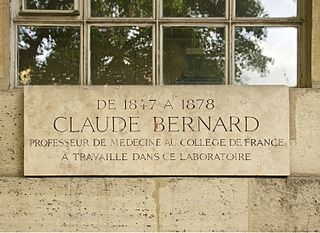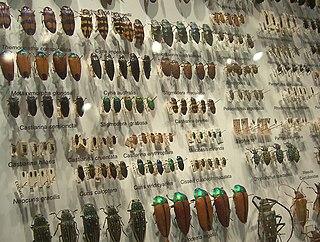 W
WAesthetics were of great importance to much of the ancient world.
 W
WAnimals that are held by humans and prevented from escaping are said to be in captivity. The term is usually applied to wild animals that are held in confinement, but may also be used generally to describe the keeping of domesticated animals such as livestock or pets. This may include, for example, animals in farms, private homes, zoos and laboratories. Animal captivity may be categorized according to the particular motives, objectives and conditions of the confinement.
 W
WA civilization is a complex society that is characterized by urban development, social stratification, a form of government, and symbolic systems of communication.
 W
WA commemorative plaque, or simply plaque, or in other places referred to as a historical marker or historic plaque, is a plate of metal, ceramic, stone, wood, or other material, typically attached to a wall, stone, or other vertical surface, and bearing text or an image in relief, or both, to commemorate one or more persons, an event, a former use of the place, or some other thing. Many modern plaques and markers are used to associate the location where the plaque or marker is installed with the person, event, or item commemorated as a place worthy of visit. A monumental plaque or tablet commemorating a deceased person or persons, can be a simple form of church monument. Most modern plaques affixed in this way are commemorative of something, but this is not always the case, and there are purely religious plaques, or those signifying ownership or affiliation of some sort. A plaquette is a small plaque, but in English, unlike many European languages, the term is not typically used for outdoor plaques fixed to walls.
 W
WThe conservation and restoration of insect specimens is the process of caring for and preserving insects as a part of a collection. Conservation concerns begin at collection and continue through preparation, storage, examination, documentation, research and treatment when restoration is needed.
 W
WThe cuckoo clock, more than any other kind of timepiece, has often featured in literature, music, cinema, television, etc., in the Western culture, as a metaphor or allegory of innocence, childhood, old age, past, fun, mental disorder, etc. It has apparently been viewed more as a symbol or a toy -a folksy musical apparatus with animated figures- fascinating and a bit mysterious rather than as a serious timekeeper.
 W
WA cultural icon is a person or an artifact that is identified by members of a culture as representative of that culture. The process of identification is subjective, and "icons" are judged by the extent to which they can be seen as an authentic symbol of that culture. When individuals perceive a cultural icon, they relate it to their general perceptions of the cultural identity represented. Cultural icons can also be identified as an authentic representation of the practices of one culture by another.
 W
WHeraldry is the system of visual identification of rank and pedigree which developed in the European High Middle Ages, closely associated with the courtly culture of chivalry, Latin Christianity, the Crusades, feudal aristocracy, and monarchy of the time. Heraldic tradition fully developed in the 13th century, and it flourished and developed further during the Late Middle Ages and the Early Modern period. Originally limited to nobility, heraldry is adopted by wealthy commoners in the Late Middle Ages. Specific traditions of Ecclesiastical heraldry also develop in the late medieval period. Coats of arms of noble families, often after their extinction, becomes attached to the territories they used to own, giving rise to municipal coats of arms by the 16th century.
 W
WHyperdiffusionism is a pseudoarchaeological hypothesis suggesting that certain historical technologies or ideas originated with a single people or civilization before their adoption by other cultures. Thus, all great civilizations that share similar cultural practices, such as construction of pyramids, derived them from a single common progenitor. According to its proponents, examples of hyperdiffusion can be found in religious practices, cultural technologies, megalithic monuments, and lost ancient civilizations.
 W
WInsect collecting refers to the collection of insects and other arthropods for scientific study or as a hobby. Most insects are small and the majority cannot be identified without the examination of minute morphological characters, so entomologists often make and maintain insect collections. Very large collections are conserved in natural history museums or universities where they are maintained and studied by specialists. Many college courses require students to form small collections. There are also amateur entomologists and collectors who keep collections.
 W
WThis is a list of cultural icons of Japan. It contains the most important symbols of Japan, including its national symbols and symbols associated with various aspects of the culture of Japan.
 W
WA menagerie is a collection of captive animals, frequently exotic, kept for display; or the place where such a collection is kept, a precursor to the modern zoological garden.
 W
WThe "New World" is a term which is applied to the majority of Earth's Western Hemisphere, specifically the Americas. The term gained prominence in the early 16th century, during Europe's Age of Discovery, shortly after the Italian explorer Amerigo Vespucci concluded that America represented a new continent, and subsequently published his findings in a pamphlet which he titled Mundus Novus. This realization expanded the geographical horizon of classical European geographers, who had thought the world consisted of Africa, Europe, and Asia, collectively now referred to as the Old World, or Afro-Eurasia. The Americas were also referred to as the fourth part of the world.
 W
WThe Old World consists of Africa, Europe, and Asia, or Afro-Eurasia, regarded collectively as the part of the world known to the inhabitants thereof before contact with the Americas. The Americas are therefore contrariwise called the New World.
 W
WPlant collecting is the acquisition of plant specimens for the purposes of research, cultivation, or as a hobby. Plant specimens may be kept alive, but are more commonly dried and pressed to preserve the quality of the specimen. Plant collecting is an ancient practice with records of a Chinese botanist collecting roses over 5000 years ago.
 W
WThe history of scholarship is the historical study of fields of study which are not covered by the English term "science", but are covered by, for example, the German term "Wissenschaft". Examples are the history of classical studies, the history of the study of religions, of philosophy, of Biblical studies, of historiography, of the study of music, the study of arts, the study of literature etc. It is a field which has recently undergone a complete renewal and is now a major branch of research. As of 2016, the journal History of Humanities is dedicated to writing the history of scholarship in the humanities as different from the sciences.
 W
WTuranism, also known as pan-Turanianism or pan-Turanism, is a nationalist cultural and political movement proclaiming the need for close cooperation or political unification between peoples of Inner and Central Asian origin like the Finns, Japanese, Koreans, Sami, Samoyeds, Hungarians, Turks, Mongols, Manchus and other smaller ethnic groups as a means of securing and furthering shared interests and countering the threats posed by the policies of the great powers of Europe. It was born in the 19th century to counter the effects of pan-nationalist ideologies such as pan-Germanism and pan-Slavism. The idea of a "Turanian brotherhood and collaboration" was borrowed from the pan-Slavic concept of "Slavic brotherhood and collaboration".